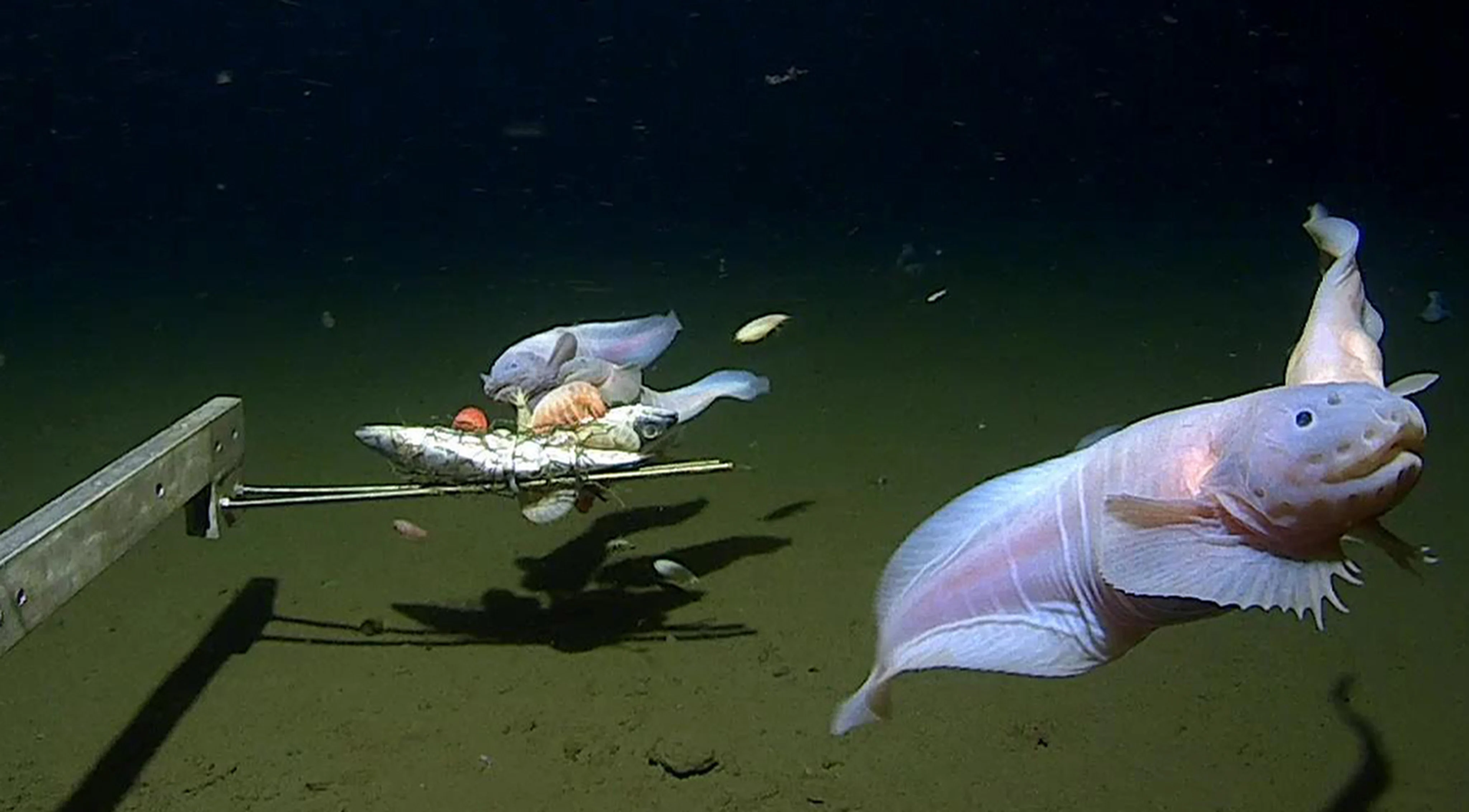Copyright scmp

Deep-sea animals in the Pacific Ring of Fire off Japan are rapidly growing and adapting, scientists observed in crewed submersible dives. Creatures in the deep, dark ocean have evolved diverse strategies to survive, adapting to varying depths and nutrient availability. The team from the University of Western Australia (UWA) and Tokyo University of Marine Science and Technology published their findings gleaned from studies in the Ring of Fire – a Pacific belt that contains hundreds of active and dormant volcanoes – in the peer-reviewed Journal of Biogeography last month. The scientists conducted six crewed submersible dives at depths ranging from around 7,000 metres to 9,775 metres (23,000-32,000 feet) across three trenches in Japan in 2022. Among them was the Japan Trench that runs parallel to the east coast of Japan for more than 600km. The team took three submersible dives there, including one at the epicentre of the magnitude 9 earthquake that triggered a devastating tsunami in 2011. “The Japan Trench is known for tsunamigenic megathrust earthquakes that result in large mass wasting events at depth and resuspension of sediments thousands of metres above the sea floor,” they wrote. They found that the nutrient-rich trench supported an abundance of deposit-feeding sea cucumber, mysid shrimp and tube anemones at around 7,500 metres deep. At 7,310 metres, the researchers found that the limited food supply in the Ryukyu Trench, compared to that of the Japan Trench, supported distinct communities. Brittle stars – echinoderms related to starfish – were abundant, but sea cucumbers were nearly absent. In the Izu-Ogasawara Trench, which extends south of the Japan Trench, the team took their deepest dive at 9,775 metres. They found many Cladorhizidae sponges, sea lilies and sea cucumbers. There, the team also encountered the world’s deepest fish, a finding that they released in 2023. They captured the snailfish species of the genus Pseudoliparis on camera at a depth of 8,336 metres. It was among the nearly 30,000 organisms from 70 morphological groups scientists documented from analysing 12.5 hours of footage. Lead author Denise Swanborn, a research fellow at Minderoo-UWA Deep-Sea Research Centre and the school of biological sciences at UWA, said although the abundance of organisms might be lower in the hadal zone below 6km deep compared to shallower waters, major animal groups were still present, showing “an amazing range of adaptations”. The team observed differences in the diversity and composition of communities between the trenches, linked to depth and the influx of nutrients from surface waters, according to the marine ecologist. “In different trenches at the same depth, we were able to see differences that were mostly related to habitat structure, which is also linked to historic seismic activity. Some of these trenches were really seismically active and created large disturbances,” she said, referring to earthquakes, landslides and sediment plumes. “By reshaping the sea floor structure and everything that lives on it, the impact on sea floor life is quite drastic.” In areas previously disturbed by seismic activity, organisms tend to be “opportunistic”, Swanborn said, referring to species that were quick to adapt to newly available resources or habitats. “They can deal with a pulse of nutrient input and relatively quickly adapt to new environments,” she said. “Whereas on the more stable sides, the organisms were much more slow-growing, often attached to the sea floor. Also, the diversity was much higher – stability means higher numbers of organisms that survive. We did see very clear differences in the communities.” Deep-sea animals fed on minimal food, primarily from what descended from surface waters, she said. “Often these are food particles suspended in the water column. Organisms have adapted strategies to filter things out of the waters,” she said. Swanborn pointed to sea anemones with long, white stalks that filter the water to capture small animals or feed on tiny particles that float in the ocean. There were also deposit feeders, such as sea cucumbers or brittle stars, which obtained nutrients from the sediment on the sea floor by ingesting it, filtering out the necessary nutrients and expelling what they do not need, she said. Over the past two years, the team also explored the abyssal plains of the Pacific, the Nova Canton Trough – a fracture zone in the Central Pacific – the world’s second deepest trench called the Tonga Trench in the Pacific, around Antarctica, and through the Atlantic, with findings to be published later. Meanwhile, China is rapidly advancing deep-sea exploration with technology such as the home-grown submersible Fendouzhe, which explored the world’s deepest trench, the Mariana Trench. In 2020, the crewed submersible reached the world’s deepest point – Challenger Deep – at more than 10,000 metres, around 322km southwest of the US territory of Guam. Its ocean research vessels explore the western Pacific Ocean, near the second island chain which includes the major US base at Guam. Beijing has also announced new plans to build an underwater research station in the South China Sea.



